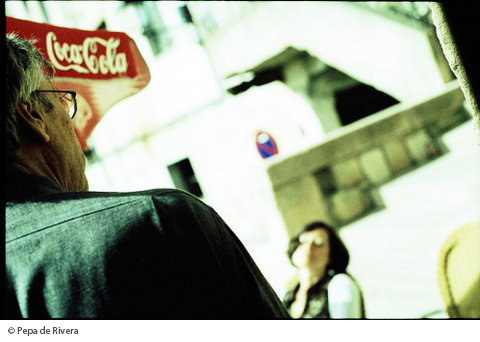One Remark on Literature and Photography
© Guillermo Labarca
 Every good photographer reads a lot and really well. Cartier Bresson, Franck and Garcia Alix have a reputation of being readers. Good writers' descriptions usually convey a significant photographic eye, What could be more graphic than the literary images of Proust, Musil, Henry James or Góngora? Good painters have and still are great readers as well, some of them are even writers too, such as Leonardo, Picasso or Motherwell.
Every good photographer reads a lot and really well. Cartier Bresson, Franck and Garcia Alix have a reputation of being readers. Good writers' descriptions usually convey a significant photographic eye, What could be more graphic than the literary images of Proust, Musil, Henry James or Góngora? Good painters have and still are great readers as well, some of them are even writers too, such as Leonardo, Picasso or Motherwell.
Is there a relationship between creating images or texts? Obviously the procedures are different, and each of them require different techniques, skills and approaches to reality. However, the question still stands and such relationship between images and words stays intriguing. Both disciplines, photography and literary descriptions, share a particular origin: the vision, they both look at reality thoroughly and pick up the aspects that represent it in the most proper way. Photography offers choices such as camera position, frame, sharpening or exposure speed, among others. Writing makes use of rhythm, specific words that become sentences and paragraphs in order to describe a scene. Both of them try to move reality into their corresponding supports, the appearance perceived, the visible aspect, and thus, they try to express a feeling. They achieve it working over the image, whether visually or wordily, adding shades and nuances, outstanding angles, modifying details…
It seems that photographers (or other visual artists) and writers share a sense of nostalgia. Writers approach reality as if they were photographers and the latter read as if they needed someone revealing them the meaning of looking. Nevertheless, photographers do not always success in communicating their message properly, and writers, on their side, realize that frequently they don't get to deliver a complete image without betraying the literary aims, or, maybe due to a lack of resources within literature. It also seems that both photographers and writers would like to borrow the skills one another.
If it would be possible to transfer the literary resources into photography and viceversa, we all would be capable to convey a more complete reality. As this possibility does not exist, only wish and nostalgia is what is left for writers and photographers. We can always choose Garcia Alix's strategy too, he calls it "fake horizon", which means "faking reality with our subjective look, this way the visible reality becomes a metaphor of itself and a metaphor of a thought". This is how the photographer ends up telling tales, stories about the people they portrait, fables on nature and landscape, still-lives that describe past events which get frozen through the camera lens. The stories that photography tells about always happen a step after the instant of the snap, they start out as soon as the image is finished out and offered in a computer screen or, better, printed on paper. At that point words are indispensable because they elaborate the meanings of the photographer's creation.
But, what about the photographer? Do they have a discourse before taking the picture? Paradoxically, in order to get a significant image they need to put their discourse aside, consciously ignoring it, subconsciously burying it, putting the contact with reality and with the camera viewer on the first place. I said paradoxically because the more complex the discourse is and the less present it is at the moment of the shot, the more interesting the result will be, the more rich and significant will the image become. Looking is what is left for the photographer, learning how to look at the object of their eye, getting into it and, at the same time, counting on a good range of meanings. Those are the conditions to take relevant photographies.
